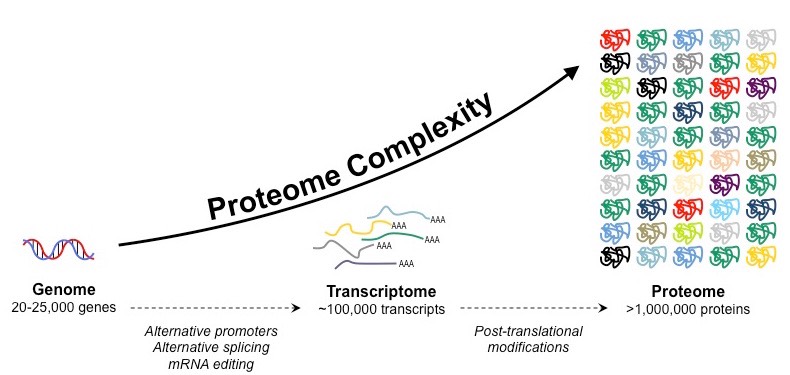IB Biology HL (higher level)- 2024 – Practice Questions- All Topics
Topic 2.4 Proteins
Topic 2 Weightage : 10%
All Questions for Topic 2.4-Amino Acids, Peptide Bonds, Protein Structure, Denaturation, Gene ⇒ Polypeptide, Proteome, Protein Functions, The pH Scale, Fibrous vs Globular Proteins, Amino Acid Polarity
Question
The number of protein-coding genes in the human genome is estimated to be about 20 000, which is much less than the size of the proteome. What is one reason for this?
A Exons are removed from RNA before translation.
B There are more types of amino acids than nucleotides.
C mRNA can be spliced after transcription.
D Base substitutions occur during transcription.
▶️Answer/Explanation
Ans: C

The size of the proteome depends on the organism, cell type, and environmental conditions. It is estimated that the human genome contains about 20 000 protein-coding genes, but each gene can produce multiple protein variants by alternative splicing, post-translational modifications, and proteolytic cleavage. Therefore, the human proteome is much larger than the human genome. A proteome is the complete set of proteins expressed by an organism, while a mRNA is specific short chain of amino acids which is much shorter than a proteome.
Question
Which organic molecules may contain the element Sulphur?
Proteins
Carbohydrates
Phospholipids
Nucleic acids
▶️Answer/Explanation
Ans: A

Proteins can contain Sulphur for example, Methionine and Cysteine are the two sulfur-containing amino acids that are incorporated into proteins. Sulfur belongs to the same group in the periodic table as oxygen but is much less electronegative. This difference accounts for some of the distinctive properties of the sulfur-containing amino acids.
